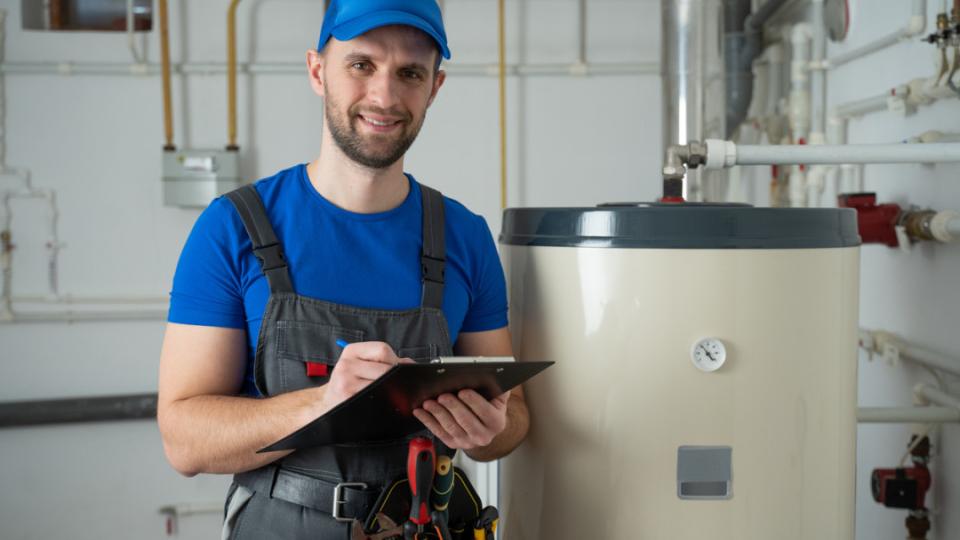The Ultimate Guide to Hot Water Heater Maintenance
Your hot water heater is one of the most essential appliances in your home, providing hot water for bathing, cooking, cleaning, and other daily activities. Despite its importance, it is often overlooked until something goes wrong. Regular maintenance is key to ensuring the longevity and efficiency of your hot water heater. This comprehensive guide will cover why hot water heater maintenance is crucial, how to perform routine maintenance, common issues to watch out for, and when to call a professional.
Why Hot Water Heater Maintenance is Important
1. Prolongs the Lifespan
Regular maintenance can significantly extend the lifespan of your hot water heater. A well-maintained unit can last 10-15 years, while a neglected one might fail in half that time. Routine checks and servicing help identify potential issues early, preventing costly repairs or premature replacements.
2. Increases Efficiency
A clean and well-maintained hot water heater operates more efficiently, reducing energy consumption and lowering your utility bills. Sediment build-up, for example, can cause the heater to work harder, using more energy to heat water.
3. Ensures Safety
Water heaters can pose safety risks if not properly maintained. Gas leaks, faulty pressure relief valves, and other issues can lead to dangerous situations. Regular maintenance helps ensure that your unit operates safely and reliably.
4. Improves Water Quality
Over time, sediment and mineral deposits can accumulate inside the tank, affecting the quality of your hot water. Regular flushing and cleaning can prevent these build-ups, ensuring that your water remains clean and clear.
Routine Maintenance Tasks
1. Inspecting the Anode Rod
Routine maintenance tasks include inspecting the anode rod, flushing the tank, testing the pressure relief valve, checking the temperature and inspecting for leaks.
The temperature setting on your hot water heater should be around 120°F (49°C). This temperature is sufficient for most household needs and helps prevent scalding. To adjust the temperature. Locate the thermostat: For electric heaters, the thermostat is usually behind an access panel. For gas heaters, it’s typically on the gas valve. Adjust the temperature: Use a screwdriver to set the thermostat to 120°F. For gas heaters, turn the dial to the desired temperature
You should regularly check around your hot water heater for any signs of leaks. Look for water pooling around the base of the unit or damp spots on the floor. If you notice any leaks, it’s essential to address them immediately to prevent water damage and further issues.
The other maintenance issues are probably best handled by a professional. Contact a TrustDALE Certified professional for your hot water heater maintenance needs.
Common Issues and Solutions
1. No Hot Water
If your hot water heater is not producing hot water, several factors could be to blame:
- Power supply: Check if the circuit breaker has tripped or if the pilot light is out.
- Thermostat: Ensure the thermostat is set to the correct temperature.
- Heating elements: For electric heaters, the heating elements might be faulty and need replacement.
- Gas supply: For gas heaters, check the gas supply and ensure the gas valve is open.
2. Insufficient Hot Water
If you’re running out of hot water quickly:
- Sediment build-up: Flush the tank to remove sediment that might be reducing capacity.
- Thermostat setting: Ensure the thermostat is set correctly.
- Demand: Consider if your hot water usage has increased and whether your tank size is sufficient.
3. Strange Noises
Popping or rumbling noises from the tank are usually due to sediment build-up:
- Flush the tank: Remove the sediment by flushing the tank.
- Regular maintenance: Perform routine maintenance to prevent future build-up.
4. Discolored Water
Rusty or discolored water can be a sign of:
- Corrosion: Check the anode rod and replace it if necessary.
- Sediment: Flush the tank to remove any sediment causing discoloration.
5. Leaks
Leaks can stem from various issues:
- Loose connections: Check all connections and tighten them if necessary.
- Faulty pressure relief valve: Test and replace if it’s not functioning correctly.
- Tank corrosion: If the tank itself is leaking, it might need to be replaced.
All of these common issues can be addressed by a TrustDALE Certified professional.
If your water heater is over 10 years old and experiencing frequent issues, a professional can advise whether it’s time for a replacement.
Maintaining your hot water heater is crucial for ensuring its longevity, efficiency, and safety. Regular inspections, flushing the tank, checking the temperature, testing the pressure relief valve, and inspecting for leaks are essential tasks that can prevent most issues. By staying proactive with maintenance, you can enjoy consistent hot water, lower energy bills, and avoid costly repairs or replacements.
For more complex issues or when in doubt, don’t hesitate to call a professional. Proper maintenance and timely intervention will keep your hot water heater running smoothly for years to come, providing the comfort and convenience your household needs.

